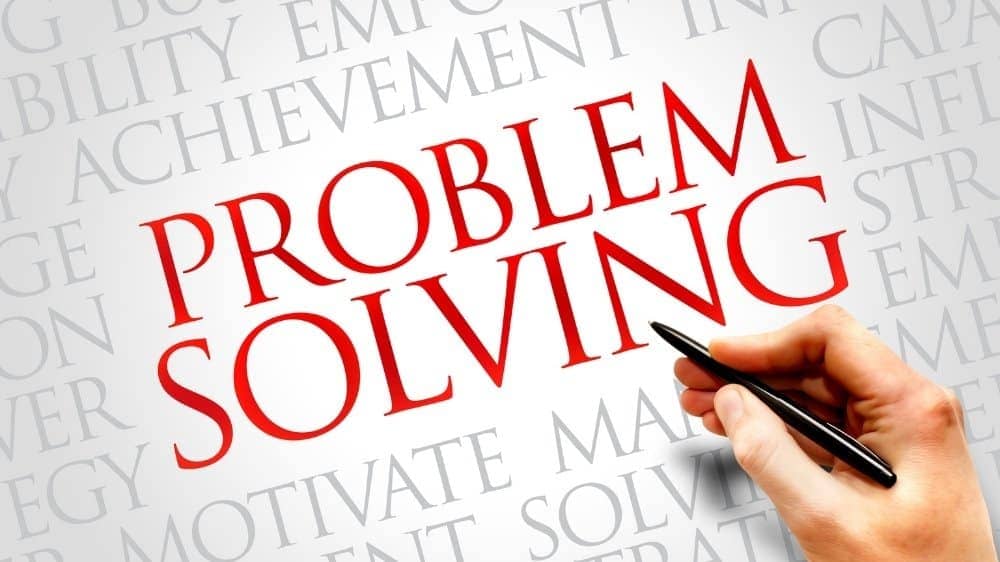As James Clear says-’’Your life bends towards what you accept .’’
The changed mind is super powerful.
The technique of inversion has been used by ancient Stoic philosophers like Marcus Aurelius, Seneca, and Epictetus.
They used reverse thinking in which they also imagined the worst-case scenario beforehand so that they could handle failure better and make better plans to prevent them from happening. This mental exercise also helped them to overcome their fears .
This technique of thinking drives compelling opportunities for innovation and is used by all Great thinkers, icons, and innovators occasionally.
It is still relevant in the present times and is used by people from all walks of life, right from businessmen, investors, CEOS, Managers, Leaders in every field, Coaches, artists, and Marketing and Sales heads.
Inversion is a rare critical skill all great thinkers use to solve their problems.
It comes from algebra where you invert an equation to solve it easily and faster.
This technique is also used in other aspects of life to solve problems.
Inversion is reversing your thinking by turning the problem upside down and seeing it from a new perspective.
This way of thinking helps you think forward and backward, taking into account the opposite side of things.
The power of the technique lies in the fact that it helps you to know how an effort could fail and then take appropriate precautions to avoid failure.
You can then shape your life by identifying things that you do not like to do and eliminating them.
That leaves you with the essential stuff.
By eliminating the non-essential you can pivot faster towards what is going to work and improve your life dramatically.
By using inversion you make well-informed decisions to avoid those mistakes which will lead to failure.
The aim of the post is to help you understand how Inversion is related to problem solving , Why use Inversion for Solving Problems ,5 steps to apply inversion and the different areas of life where inversion is used .
Do You Want To Solve Problems Like a PRO ?
Get the FREE Problem Solving Work Book HERE

HOW IS INVERSION USED FOR PROBLEM SOLVING
Problems in life are inevitable. They stop us from making the progress we want to make.
Problem-solving is therefore an essential life skill to make things easier for us and make the progress we want to.
To solve problems we need to think fresh and devise creative solutions. Our mental doors open in the process and lead us to make great discoveries.
Most of us fail at problem-solving because we have been taught by our schools and families to think forward to solve problems.
This is the traditional approach and limits our ability to think and solve problems. Most often this approach leads to failure.
The innovative approach to solving problems requires us to think differently and in a different direction.
“Hard problems are best solved when they are addressed backward,”-Charlie Munger
Charlie Munger the business partner of Warren Buffet at Berkshire Hathaway, recommends looking at Hard Problems in reverse to solve them.
This offers you an alternate perspective to solve them faster instead of limiting your perspective and options.
Charlie uses this approach at Berkshire Hathaway, to increase wealth.
He frames the goal of increasing wealth as a problem and then inverts it. The problem then becomes one of how not to lose money. He then gets a very different set of issues to see to increase his wealth.
WHY MANAGERS MUST USE INVERSION TO SOLVE PROBLEMS
Charlie Munger, one of the greatest minds of the 20th century quotes –
”Invert, always invert: Turn a situation or problem upside down. Look at it backward. What happens if all our plans go wrong? Where don’t we want to go, and how do you get there? Instead of looking for success, make a list of how to fail instead. Tell me where I’m going to die, that is, so I don’t go there.”
When we normally solve problems, we ask ourselves questions like –
-
What can I do to solve this problem?
-
What should I do to achieve this outcome or result?
-
What strategy or actions will help me get where I want to be?
-
How can I be successful in this project?
When we use inversion, we ask ourselves questions like-
-
What challenges, events, behavior, or action can stop me from solving this problem?
-
What events, behavior, or action can stop me from achieving this outcome?
-
What gaps in strategy or actions can stop me to get where I want to be?
-
How can I fail in reaching this goal?
In the former process, you do not think about the worst-case scenario because the solution seems to be right in front of us and appears to be confirming our beliefs.
You do not see the limitations of your assumptions.
In the latter approach, you make a conscious effort to seek the limitations of your assumptions by inverting the query.
So you see how powerful inversion is as compared to the normal way of seeking solutions.
In this model, you explore the problem objectively by thinking the opposite of what you want.
This method of reversing the problems and reverse questioning helps you to see the limitations of your own beliefs and challenge your own assumptions and false beliefs which act as a barrier and gain a better perspective to find solutions with greater clarity and understanding.
It helps you to think outside your normal thought patterns and approach problems from a different perspective.
This enables you to uncover things you normally do not think and a whole new world of possibilities opens up, which you never imagined existed.
When we don’t apply inversion to solving problems:
-
We limit our thinking
-
Ignore patterns of failure
-
Do not envision roadblocks
-
Over future risks
Therefore using inversion when things become tough is very important to make breakthroughs and see new possibilities.
THE 5 STEPS OF INVERSION
STEP 1 -Write down your problem question
Write down the result you desire. Identify what success will look like.
Note down what you need to do to get the desired outcome.
STEP 2 Now invert the problem and ask the opposite of that question
Identify what failure will look like. Ask a question -’’ What will it cost me if I don’t change things .”
STEP 3 -Go deep in understanding and explore what can cause failure and prevent you from achieving your goal
Identify the actions, assumptions, behaviors, and decisions that can cause failure or have negative consequences. Challenge your assumptions.
NOTE -If you are doing a project with a team, ask team members to contribute to your thoughts and validate your assumptions. Use Pre -Mortems, ie, encourage them to imagine that the project has failed. Discuss with them, what could have led to the failure of the project and how they might avoid it.
STEP 4 –Weigh the Pros And Cons Of Your Different Options
When you have to choose between more than one option, you naturally compare the benefits between them. If you use inversion while comparing, it will help you to identify what you do not like about the options and compare those points while making decisions.
STEP 5 -Devise and Implement An Action Plan
Put together a strategy and action plan in place that avoids all causes of failure that you just learned.
HOW MANAGERS CAN APPLY INVERSION TO EVERY ASPECT OF THEIR LIFE
“The difference between successful people and successful people is that really successful people say no to almost anything .” –Warren Buffet
Charles Munger explains inversion well: “Invert, always invert: Turn a situation or problem upside down. Look at it backward. What happens if all our plans go wrong? Where don’t we want to go, and how do you get there?
“Instead of looking for success, make a list of how to fail instead–through sloth, envy, resentment, self-pity, entitlement, all the mental habits of self-defeat. Avoid these qualities and you will succeed. Tell me where I’m going to die so I don’t go there.”
The inversion method encourages you to consider how to avoid failure rather than focusing on achieving success.
Therefore in this strategy, the problem or decision is looked at from another point of view by inverting it.
You reframe the challenge and it makes it easier for you to identify areas to avoid, identify and challenge your assumptions and fixed perspectives.
Inversion is a very useful mental model and can be applied to almost every aspect of your work and life.
HOW TO APPLY INVERSION TO EVERY ASPECT OF YOUR LIFE ?
In Personal Life Decisions
Instead of thinking about what makes a good life or what will bring success in your life, try thinking about what would bring failure and misery, and try to avoid them.
Habits like Laziness, and unreliability will fail you despite your talents. Think about how to avoid them.
Your Productivity
In your job, if you want to boost your productivity, instead of asking yourself “What will make me more productive?”, ask yourself ‘’What makes me unproductive ?’’ Or ‘’ How do I end up Distracted ?’’
The answer to this question will help you identify all the inconsequential tasks which make you busy and lower your productivity-Eg, unnecessary meetings, interruptions, phone calls, and emails and think of how you can eliminate them.
This exercise will help you see things from a different perspective and help you free up more time and energy each day with less risk.
In Your Career
When you are young, you tend to chase success in your career by trying to be your best and get noticed. You chase promotions and try to impress your seniors.
But if you flip the approach and ask yourself ‘’How can I prevent myself from getting a promotion ?’’ Or ‘’ How can I avoid getting noticed for the wrong reasons ?’’ This will help you see things from different angles and see little things like -being on time, avoiding getting sick, taking more leaves, being more focused, making small efforts, and being more consistent with them.
Personal Finance
Financial failure happens when you spend more than you earn, or you fall into the cycle of debts, unchecked spending habits, or impulsive shopping.
But if you invert the problem of bad financial health and ask yourself, ‘’How can you sabotage your financial health?”
You will be able to figure out how not to lose money and save yourself from bad financial health and stress.
Leading in the workplace
To lead effectively in the workplace, instead of asking yourself how to be a good leader, ask yourself,’’ What would I do each day to be a terrible Leader or Manager ?’’
This will help you identify all those things that will make you terrible and focus on this that will make you more effective.
In Innovating
Innovation and creativity are the core of every organization and business.
Without innovation, it is impossible for an organization or business to survive, because it will alienate its customers.
Most people often ask,’’ What must I do to increase innovation in my team or organization?’’
But instead of asking this, choose to ask –
‘’ What must we stop doing that hinders our innovativeness?’’
Or ‘’ How could we make our team or organization less innovative ?”
Or ‘’ What will make us lose our customers or alienate them?’’
Questioning along these lines will immediately help you to identify surprising insights because of the different points of view you take. Knowing what does not work for you also helps you to learn as much as you learn from knowing what is working.
You will be quickly able to recognize the mistakes, errors or behaviors that are not working for you and then take action to remove those barriers.
Eliminating those barriers and obstacles might help creative ideas arise more quickly.
Project Management
If you are working on a very important goal or project right now.
Just pause for a few minutes and fast forward your thinking for six months from now and assume the project or goal has failed.
Now ask yourself questions like –
What went wrong?
What mistakes did you make?
How did it fail?
Or just flip your thinking and ask yourself,’’ What could cause this project /goal to become a super flop?’’
This is a failure premortem exercise, where you premeditate the evils. It is also called the “kill the company” exercise because the goal is to spell out the exact ways the company could fail.
This exercise helps you to identify the challenges and steps at which you could fail so that you can develop a foolproof plan to prevent them ahead of time.
Performance appraisals
When considering an employee for promotion, normally Managers ask the question “What makes me believe this person is ready to face challenges at the next level?” Or ‘’ What makes me think he will be successful at the next level ?’’
This can also cause you to take a wrong judgment while promoting someone.
Instead, if you invert and ask “What can cause this person to fail at the next level?”, it will open your mind to question all your beliefs, assumptions, and judgment and prevent you from making a wrong decision.
Better Cross Functional Team Collaboration.
‘’How can we prevent collaboration ?’’ Or ‘’ What are the challenges of working with cross-functional teams is better than ‘’ How can I enable better collaboration among teams ?’’
The first two questions help you to learn about the specific challenges to your people and organization and make a foolproof plan to solve these challenges and help people to step up in their roles and be more effective in cross-functional collaboration.
Relationships
It is very important to have good relationships in the organization for the better functioning of the team and the organization as a whole.
Trust, Respect, letting everyone be themselves, nurturing relationships with each other after work hours, and having open communication on all matters are the pillars of a strong relationship at the workplace.
So if you are striving for a Good organization or team relationship and ask a question -’’ What can destroy the relationships between the members of the organization or team?’’ you will be able to see how to avoid bad relationship practices.
Decluttering
If you want to declutter your home or workplace, you must give away things that do not ‘spark joy’ in your life.
Shift your mindset by asking yourself .’’ What do I want to keep that brings me joy ?’’
So instead of focussing on what you want to discard, you focus your mind on what you want to keep.
In Business Negotiations
In business negotiations, to negotiate more effectively, think of things that can go wrong and backfire. Instead of thinking about what will work, think about why it will fail. Ensure that they don’t happen.
Making More Sales
If you want to make more sales, Brainstorm ideas around how can you decrease your sales.
This will help you see the blocks that will stop you from making more sales.
Some of them will be like chasing only the big customers and always striving to win the biggest deals and ignoring the small customers.
You might not always get the big customers.
Instead of that if you just focused on the next customer and gather a lot of smaller sales, you will be more consistent and eliminate a lot of risks.
CONCLUSION
Problem-solving is essential in life.
But due to our wrong upbringing and faulty social or environmental structure, we need to think differently to make it easy for us to solve problems with minimum risk and time.
When things do not work, or when we hit a plateau, progress becomes slow. It becomes difficult to step back, identify what is working and what is not and acknowledge the gaps in our initial understanding.
Most people make small changes in their original strategy and keep moving. This can be very dangerous and you may end up wasting a vast amount of resources and time.
Inversion is a very helpful strategy that helps you when you are stuck.
The fundamental about inversion is that sometimes it is not enough to think about difficult problems in just one way. We need to think about them forward and backward.
It uses the premortem technique and helps you legitimize the doubts. This helps in imagining the possible threats which might otherwise have been invisible.
The premortem technique is very powerful since it inverts the question “How can this strategy make us successful one year down the line” to ‘How can this strategy make us fail one year down the line”.
Not asking this question at the right time may lead to suboptimal decisions with flaws that will surface at a later stage.
As Charlie Munger said :
‘’It is not enough to think problems through forward. You must also think in reverse, much like the rustic who wanted to know where he was going to die so that he’d never go there .’’
‘’Indeed many problems can’t be solved forward.’’
The great algebraist, Carl Jacobi, often said,’’ Invert, always invert .’’
Pythagoras thought in reverse to prove that the square root of two was an irrational number.
Inversion will not give us all the answers but will guide us to take a better path by asking what is more beneficial “Achieving Success” or “Avoiding Failure”.
This insight reveals a more general principle: Blindly chasing success can have severe consequences, but preventing failure usually carries very little risk.
Therefore Inversion is not about finding good advice, but rather about finding anti-advice. It teaches you what to avoid by offering a completely different view of what the issues are. It can give you game-changing solutions.
So while the natural tendency is to seek answers to the intuitive question, make an effort to invert, always invert your question. There’s tremendous learning in applying an inversion mental model to ask the question differently and find answers that don’t come naturally to us.
Inverting the problem won’t always solve it, but it will help you avoid trouble.
Spend less time trying to be brilliant and more time trying to avoid obvious stupidity.
You can think of inversion as the avoiding stupidity filter. Avoiding stupidity is easier than seeking brilliance.
So, the next time you’re presented with a problem, just invert it.
How helpful was the post ? What did you learn from it ? Please share your thoughts below .
Babita Sharma
Leadership Coach
www.leadwithpassion.co.in







